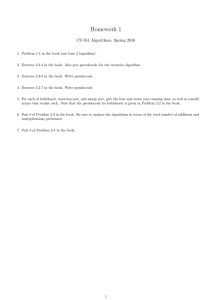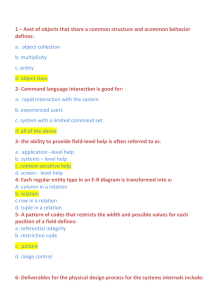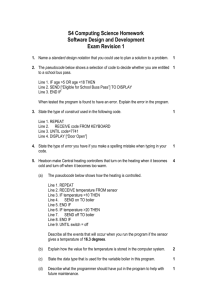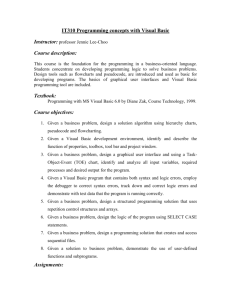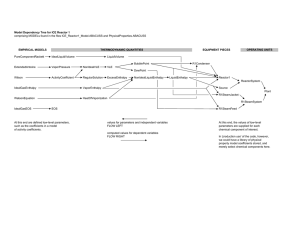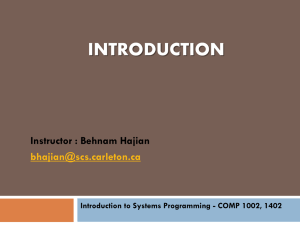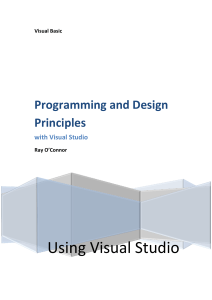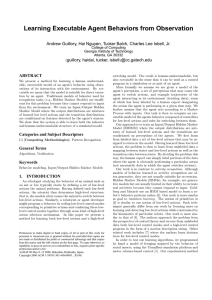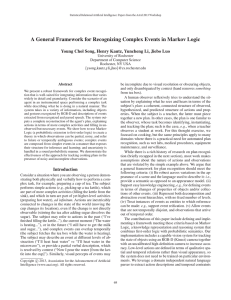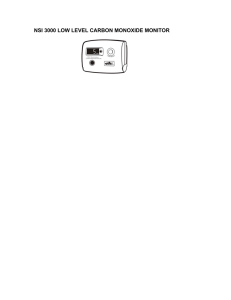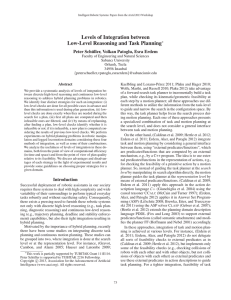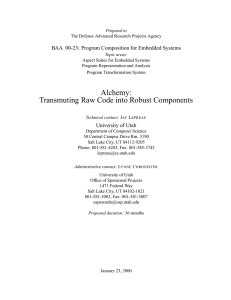Document 13540070
advertisement
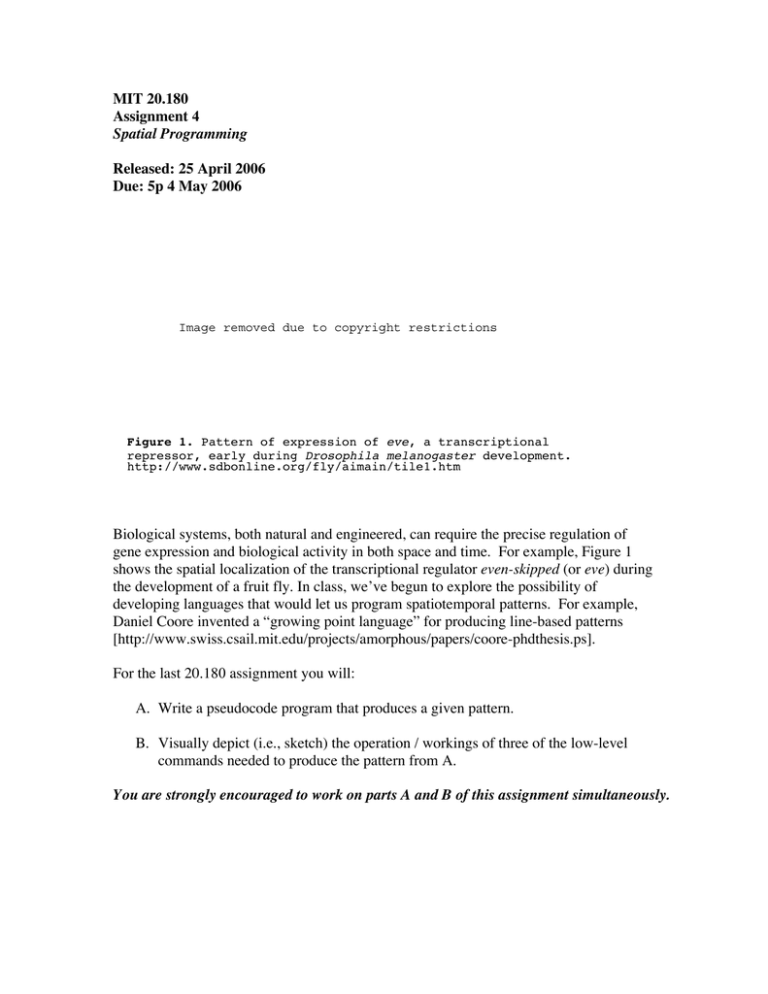
MIT 20.180 Assignment 4 Spatial Programming Released: 25 April 2006 Due: 5p 4 May 2006 Image removed due to copyright restrictions Figure 1. Pattern of expression of eve, a transcriptional repressor, early during Drosophila melanogaster development. http://www.sdbonline.org/fly/aimain/tile1.htm Biological systems, both natural and engineered, can require the precise regulation of gene expression and biological activity in both space and time. For example, Figure 1 shows the spatial localization of the transcriptional regulator even-skipped (or eve) during the development of a fruit fly. In class, we’ve begun to explore the possibility of developing languages that would let us program spatiotemporal patterns. For example, Daniel Coore invented a “growing point language” for producing line-based patterns [http://www.swiss.csail.mit.edu/projects/amorphous/papers/coore-phdthesis.ps]. For the last 20.180 assignment you will: A. Write a pseudocode program that produces a given pattern. B. Visually depict (i.e., sketch) the operation / workings of three of the low-level commands needed to produce the pattern from A. You are strongly encouraged to work on parts A and B of this assignment simultaneously. A. (50%)Write a pseudocode program that produces a given pattern. Figure 2. Write a program that automatically produces the given, idealized pattern (top) when the program executes across a field of randomly spaced, asynchronous cells (bottom). Guidelines: (a) Each cell must run the same program. (b) If you want, you may use external conditions to establish gradients, initialize the entire field of cells, or begin pattern formation at one or more points simultaneously. (c) In your pseudocode, please use defined names of your own choosing to refer to cell state (e.g., color), actions (e.g., produce_signal), and intercellular signals (e.g., top_boundary). (d) Summarize in a list the total number of states, actions, and signals needed to produce this pattern. B. (50%) Visually depict (i.e., sketch, draw, et cetera) the operation and/or workings of three of the low-level commands needed to produce the pattern from A. Guidelines: (a) Use whatever media/medium is best for you (e.g., pencil and paper, an electronic drawing program). You can submit hard or electronic copies of your work. (b) In your depictions, attempt to explore and communicate how the low-level command works. Please see the examples below. (c) Your depictions can be “serious” or “playful,” “realistic” or “fantastical,” Whatever most helps you and others understand and describe what is happening. (d) You should depict three different low-level commands. Image removed due to copyright restrictions Tropisms. Taken from Figure 2-1, Coore, D. Botanical computing: A developmental approach to generating interconnect topologies on an amorphous computer. PhD thesis, Massachusetts Institute of Technology, Department of Electrical Engineering and Computer Science, February 1999. Tropisms. Drew Endy (2006) Change of State. Drew Endy (2006)
